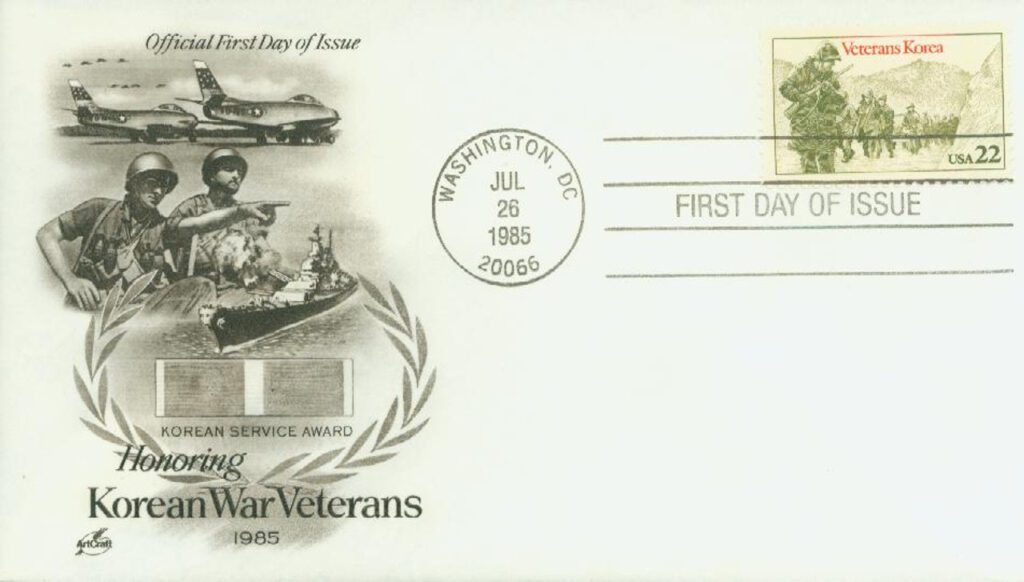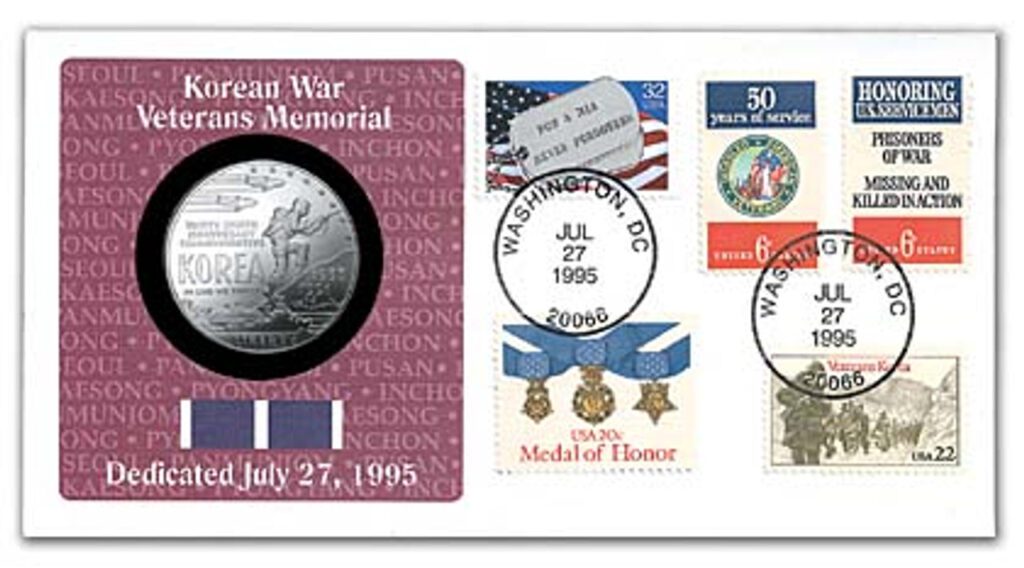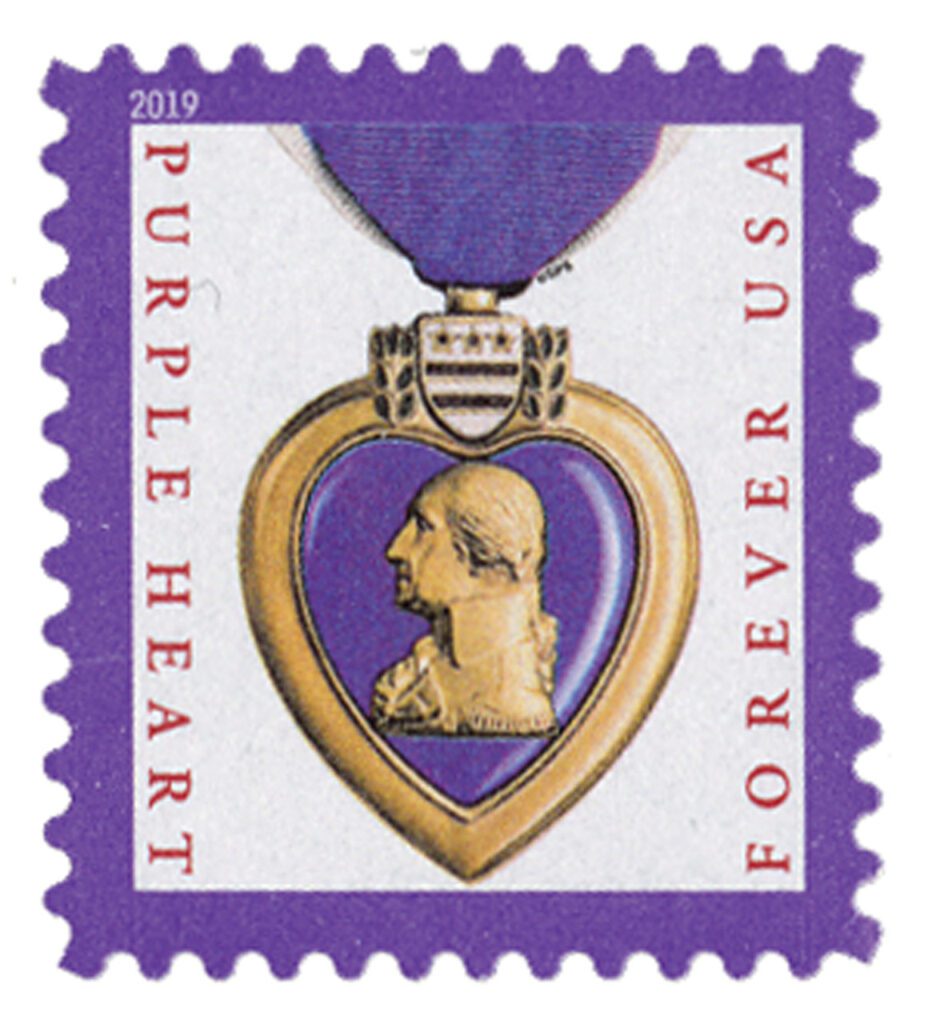On July 5, 1950, US forces had their first fight of the Korean War at the Battle of Osan.
On June 25, 1950, 75,000 North Korean soldiers poured across the 38th Parallel to begin their takeover of the South Korean peninsula. Soviet tanks and heavy artillery supported them. The South’s Republic of Korea (ROK) troops had no tanks or weapons to combat tank attacks. Within days, they were pushed south and Seoul, the capital, fell to the northern forces. ROK soldiers retreated or defected to the Northern army.
Fearing the invasion would advance the spread of communism worldwide, the United Nations Security Council condemned North Korea’s actions and called for a ceasefire. On the 27th, the council decided to send UN forces to help the ROK defend itself. In a speech supporting US involvement, President Truman said, “I felt certain that if South Korea was allowed to fall, communist leaders would be emboldened to override nations closer to our shores.”
The US committed the majority of forces in the UN command and led the operation. America’s military had been greatly reduced after World War II because of budget cuts and an emphasis on funding research on nuclear bombs. The military had to be strengthened and reorganized quickly to effectively fight a war.
US forces stationed in Japan were the first to go to Korea. The 21st Infantry Regiment of the 24th Infantry Division was considered the most combat-ready. On June 30, a force of 400 poorly equipped and inexperienced American soldiers were transported from Japan to South Korea. Named Task Force Smith, their mission was to establish a line of defense as far north as possible and slow the North Korean army so the other American divisions could be brought in to establish a stronger defensive line in the South. On July 4, Lt. Col. Charles Smith established a one-mile-long line along the road to the north of Osan, near Seoul.
The next morning, a column of North Korean tanks approached. The US soldiers were dangerously ill-equipped, lacking anti-tank guns. Instead, they had 2.35-inch rocket launchers and 57-mm recoilless rifles. US artillery fire caused little damage, and most of the tanks continued on. At 11:00 a.m. more tanks were spotted, and a column of trucks carrying about 5,000 soldiers followed these.
Smith ordered his forces to fire with everything they had. Several trucks were destroyed, but the Northern infantry quickly formed and advanced on the Americans. The task force held their lines for three hours but was forced to retreat because their ammunition was running low and they had lost communications. Over the course of the battle, they suffered 60 killed, 21 wounded, and 82 captured.
Though it was clearly a victory for the North, Task Force Smith had achieved its goal of slowing down the much larger enemy force for seven hours. This delaying action enabled other troops to set up at Pyeongtaek, 15 miles south. US troops fought several more delaying battles over the next few months while they built up the Pusan Perimeter, where they earned a resounding victory against the North Koreans.
| FREE printable This Day in History album pages Download a PDF of today’s article. Get a binder or other supplies to create your This Day in History album. |
Discover what else happened on This Day in History.






With all of the turmoil of the COVID-19 Pandemic and political unrest in our country right now, it is good to be reminded that our history of fighting for freedom around the world is reason enough for us to be proud to be an American! Thanks for these snippets of history to remind us of that fact!
One critical fact omitted: The Soviets were boycotting the UN Security Council when the US introduced the resolution to exercise Chapter VII of the UN Charter and form a UN multi-national armed force, led by the United States, to defend South Korea. If the Soviets had not been absent from the UN Security Council, the UN resolution to defend South Korea would never have been approved. Also, despite China already falling to Mao and the communists in 1949, Nationalist China, now only existing on the Island of Taiwan, was still the Chinese Security Council representative to prevent a veto on the resolution.
A GREAT history update for me. I spent 10 years in the Army (including my time in the Army Reserves) , have been to South Korea and wish EVERY American man and woman would serve at least one year in the Army to really appreciate how truly GREAT our Nation is is for its citizens. The difference between living in a free and open society, and NOT under a dictator, so-called “royalty” or some other brutal, stinking authoritarian control and … our helping friendly Nations LIKE South Korea against Communist China, Russia and other worthless, contrarian dictatorships as we did in Korea in the early 50’s … in MY opinion … is VERY important … for OUR future, for the future of our friendly Nations … and the opportunity for other populations on Earth to hopefully AVOID having to spend their lives under the despicable and brutal control of dictatorships and worthless communism … just MY strong personal opinion !!! To me, this is NO different from Americans fighting and losing lives to save our free and open society for our children, grandchildren and all future American family descendants, so HOPEFULLY … ALL American citizens will NEVER have to live and suffer under despicable authoritarian control … EVER !!!